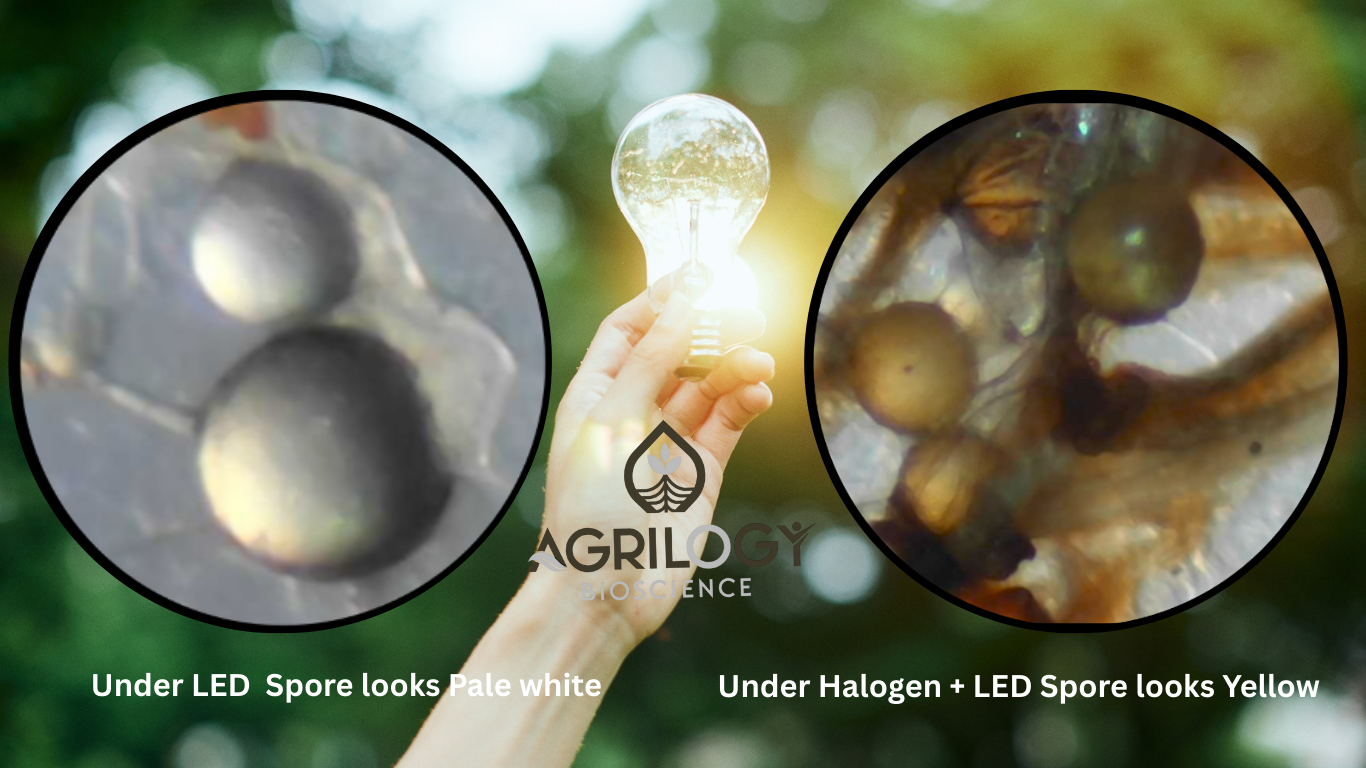
- Home
- Microscope Secrets: Why Light Choice Matters for Spore Identification

Aditi Bijalwan
Co-founder at Agrilogy Bioscience Private Limited
Uncovering the true colours of mycorrhiza spores through the science of illumination
Imagine holding the same seed under two different lamps. Under a white LED bulb, it looks pale and plain. But under warm sunlight, the seed suddenly glows with a golden richness.
The same thing happens with mycorrhiza spores under a microscope. The choice of light source can completely change how spores appear—pale and flat in one case, vibrant and mature in another. And this is not just cosmetic; it directly affects how researchers and biofertilizer producers judge spore maturity and viability.
The Story of Light and Spores
Under LED Light
LEDs are like “sharp but picky” torches. They shine narrow wavelengths, mostly cool blue-white. Spores under LED often appear whitish or flat because the pigments in their walls are not fully “woken up.”
Under Halogen Light
Halogen lamps are much closer to natural sunlight. They give a broad, continuous spectrum, rich in warm yellows and reds. Under this light, pigments such as carotenoids and melanin-like compounds come alive, making mature spores glow in yellow, brown, or orange tones.
LED + Halogen Combined
This is the perfect balance—clarity from LED with warmth from halogen. Together, they reveal crisp outlines and true colours, making it easier to judge spore maturity accurately.
Why Do Spores Change Colour?
Mycorrhiza spores are not just “dots”; they are multi-layered capsules:
- Outer wall → Contains natural pigments (yellow, brown, orange).
- Inner wall → Transparent (hyaline).
When only narrow light (like LED) strikes, pigments don’t fully reflect their colours. But when a broad spectrum (like halogen) shines through, the spores display their real, rich tones.
Why This Makes a Difference
- Immature spores (white or hyaline) → Still developing, often less viable, and less effective in helping plants absorb nutrients.
- Mature spores (yellow–brown) → Fully developed, biologically active, and capable of forming strong root associations, resulting in healthier plants and improved yields.
Choosing the right light source ensures that these differences are seen clearly, so researchers and producers don’t mistake weak spores for strong ones.
In a Nutshell
The light source you choose is just as important as the microscope itself. Halogen or a mix of halogen + LED gives the most reliable view of spore maturity. It helps uncover the “true colours” of mycorrhiza spores, supporting better decisions for researchers, biofertilizer companies, and ultimately, the farmers who depend on these invisible allies.
Comments (0)
No comments yet. Be the first to comment!
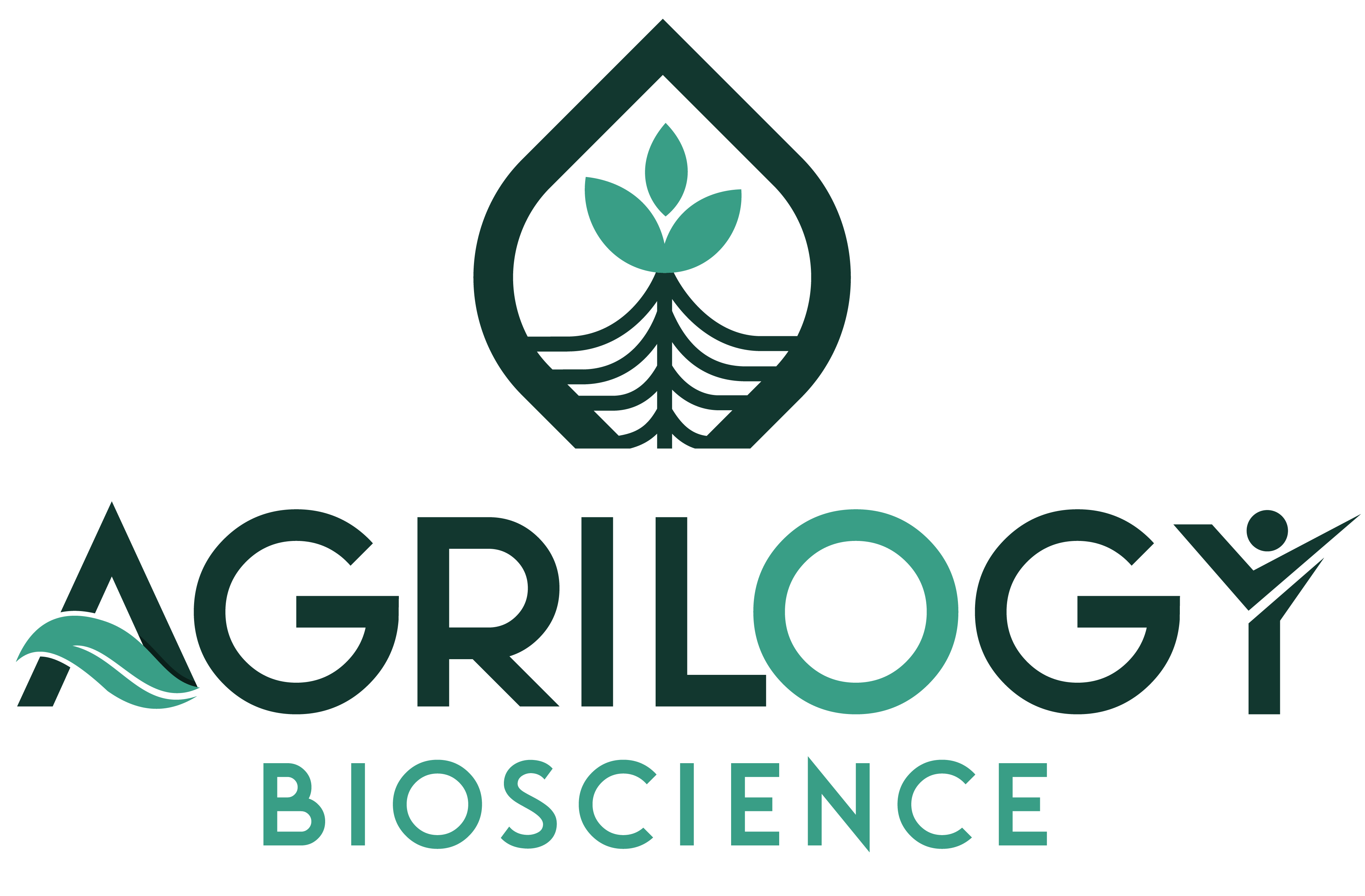
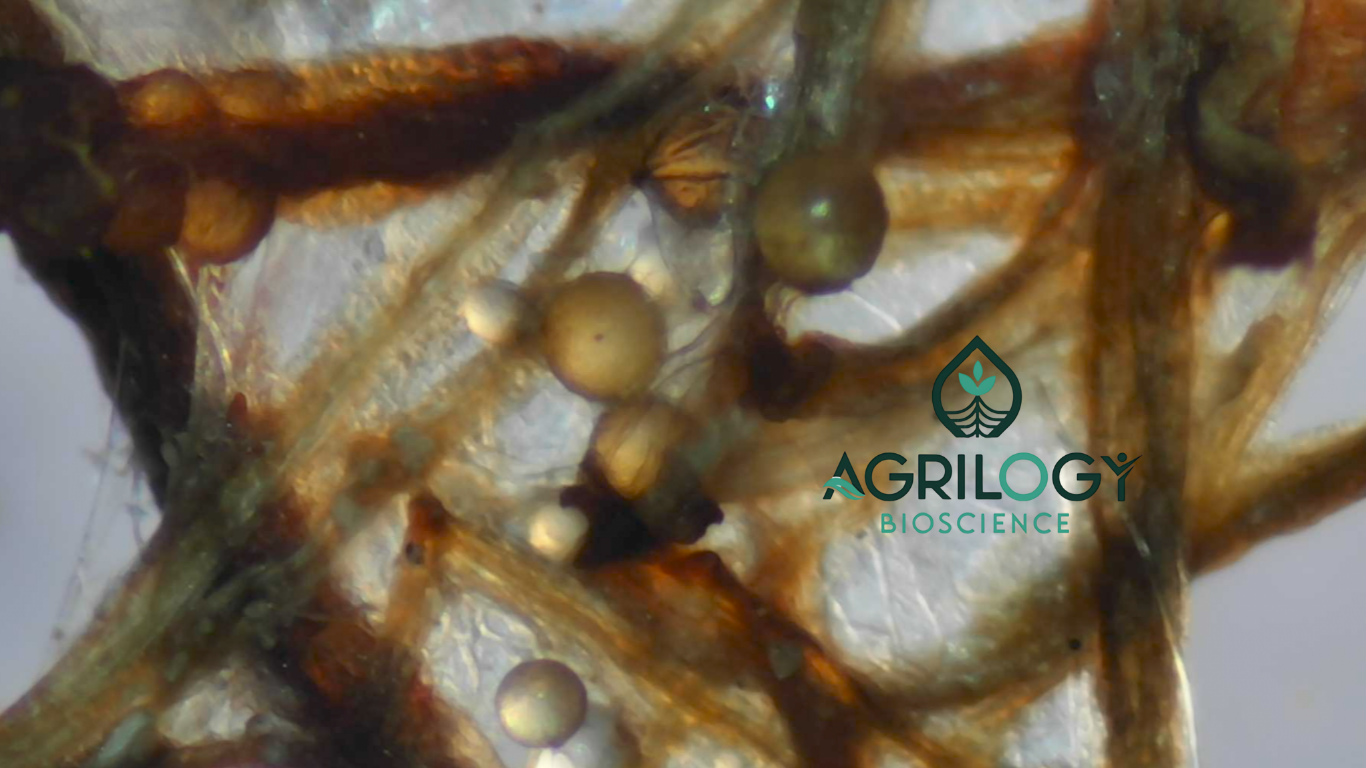
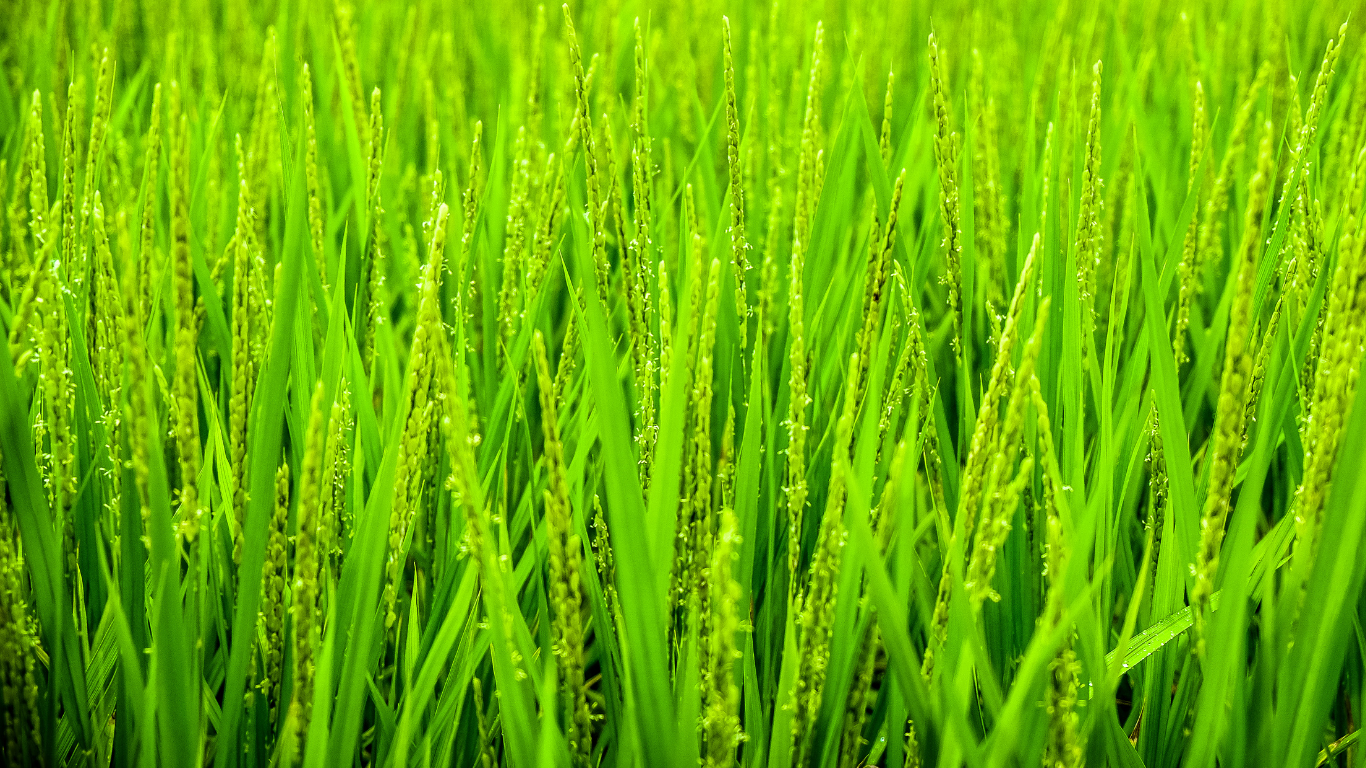
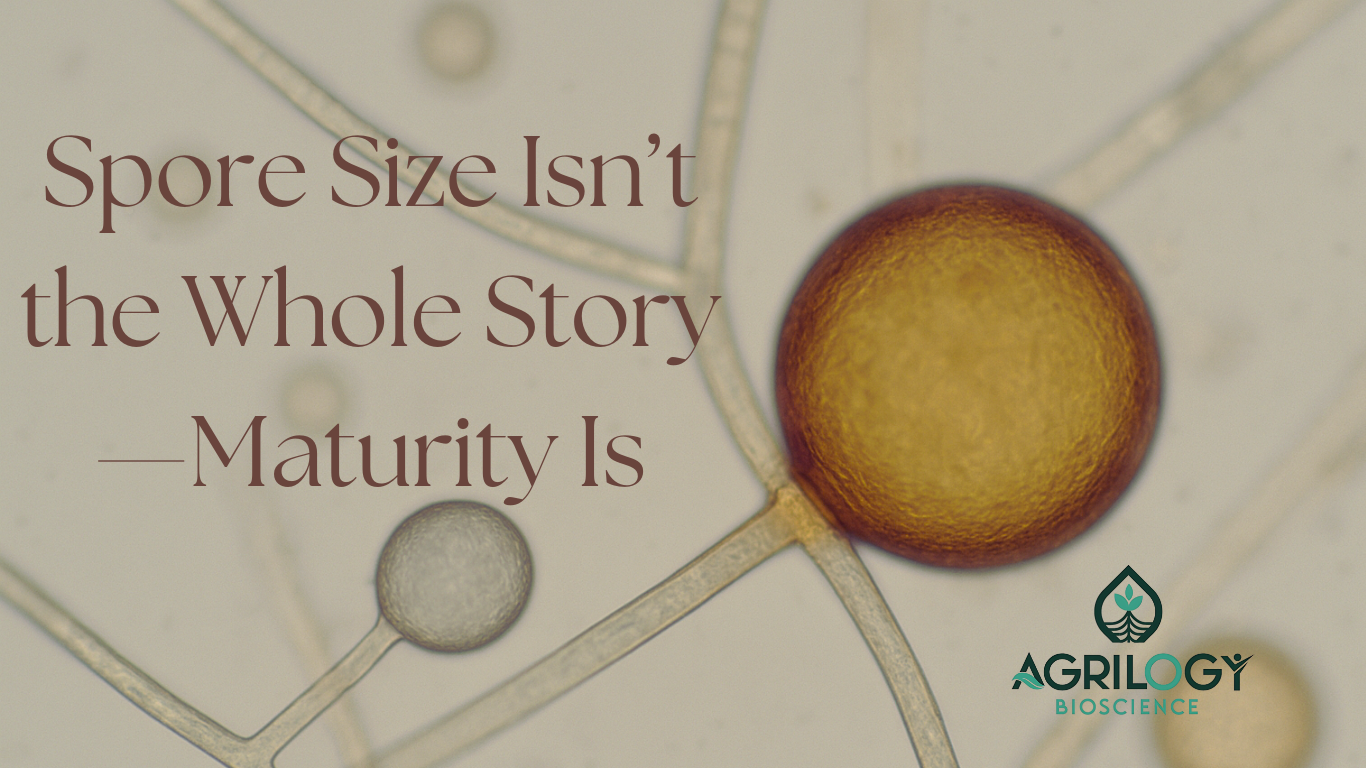
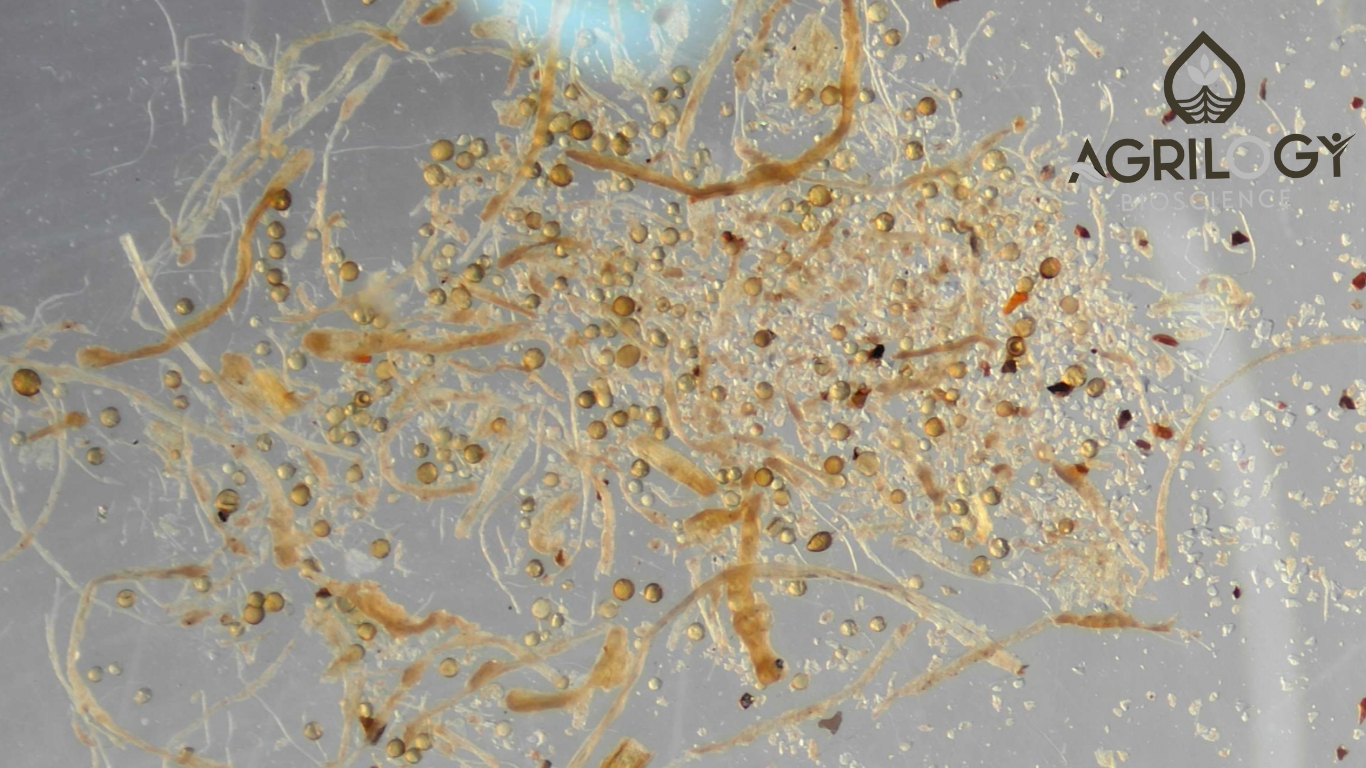
Leave a Comment